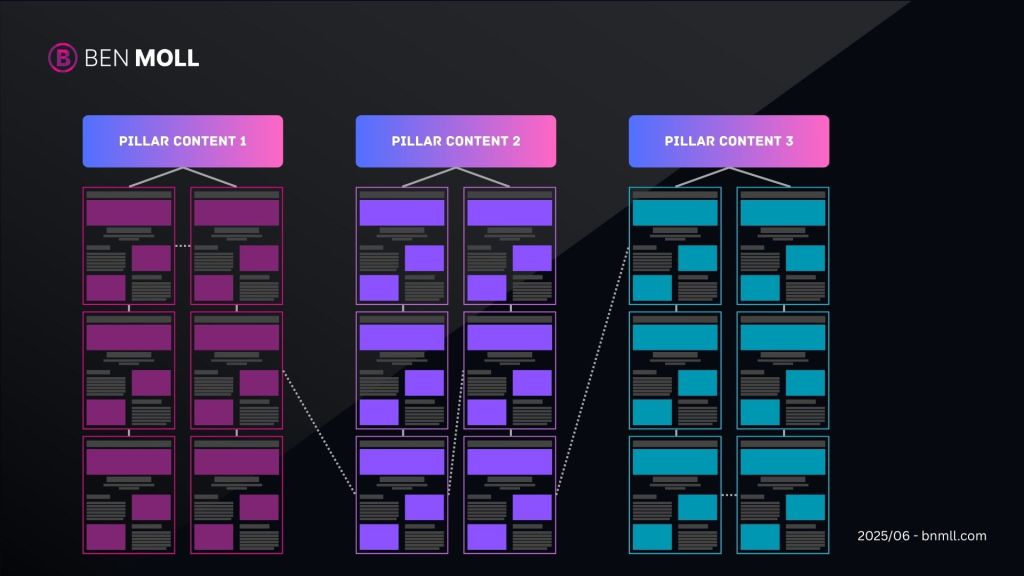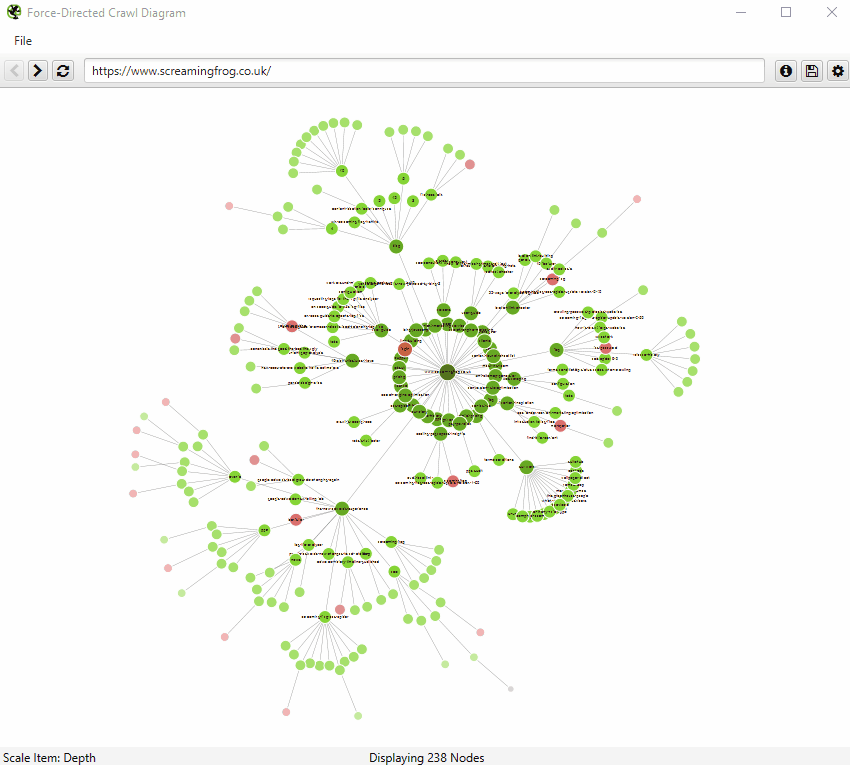In today’s fast-evolving digital landscape, standing out in search engine rankings demands more than isolated keywords and ad-hoc posts. Marketing leaders from CMOs to CEOs face the challenge of designing SEO systems that are scalable, thematic, and aligned with broader business goals. The concept of content clusters has emerged as a powerful solution to restructure SEO strategies, improve topical authority, and enhance user experience. By embracing a topic cluster strategy, organizations can achieve greater online visibility and build a resilient, future-proof approach to organic search.
This article will dive deep into the mechanics of content clusters, exploring how they interrelate with pillar content marketing, SEO content clusters, and thematic content organization. We will unpack how scalable content architecture transforms content ecosystems and offers sustainable SEO growth. Tailored for marketing leaders and tech-savvy decision-makers, this comprehensive guide provides actionable insights to elevate your brand’s search performance strategically and efficiently.
What Are Content Clusters and Why Do They Matter?
Content clusters describe a strategic method of organizing content around a central, authoritative “pillar” page supplemented by interlinked, topic-specific sub-pages or cluster content. This thematic content organization helps search engines understand your site structure and boosts your domain’s topical authority.
Traditional SEO often focuses on optimizing individual pages with narrowly targeted keywords. However, search engines like Google now prioritize holistic topical relevance and semantic connections. Content clusters leverage this by grouping multiple pieces of content that cover all facets of a broader subject.
- Pillar content: A comprehensive, cornerstone piece targeting a broad keyword or theme.
- Cluster content: Specific, detailed posts that explore subtopics linked back to the pillar.
- Interlinking: Strategic connection between pillar and clusters improves crawlability and user navigation.
For marketing leaders, adopting this structure means streamlined content creation workflows, improved SEO performance, and enhanced user engagement — making your digital marketing efforts more effective and measurable.
The Evolution from Keyword Targeting to Topic Cluster Strategy
The shift from standalone keywords to a topic cluster strategy mirrors broader changes in how search engines evaluate content quality and intent. Modern search algorithms use artificial intelligence and natural language processing (NLP) to evaluate the entire semantic field around a subject.
This shift challenges conventional SEO methods and highlights the importance of scalable content architecture. Instead of one-off blog posts or webpages, marketers must adopt an integrated framework where content reinforces a central theme.
Key advantages of a topic cluster strategy:
- Improves authority by creating a network of thematically connected content.
- Enhances user experience with clear navigation and logical content flow.
- Supports content scalability as new cluster topics are added without losing coherence.
- Boosts rankings by signaling relevance and topical depth to search engines.
For example, a SaaS company specializing in project management tools could create a pillar content page titled “Complete Guide to Project Management” with cluster content addressing agile methodologies, Gantt charts, resource allocation, and more.
How Pillar Content Marketing Fuels SEO Content Clusters
Pillar content marketing sits at the core of successful SEO content clusters. The pillar page is crafted to be exhaustive, providing a broad overview of the topic while linking to cluster pages that dive into specifics.
Crafting pillar content requires:
- Depth and breadth: Cover the topic comprehensively, anticipating user questions.
- Clear structure: Use headings, visuals, and CTAs to engage readers.
- SEO optimization: Target a high-volume, core keyword aligned with your business goals.
- Strategic interlinking: Connect to cluster pages for related, in-depth content.
Cluster pages complement the pillar by addressing long-tail keyword variations and specific user intents. By linking clusters back to the pillar, you strengthen the SEO equity of the central page.

Designing Scalable Content Architecture with SEO Content Clusters
One of the most compelling benefits of scalable content architecture is the ability to systematically grow your website’s topical authority by adding new cluster content over time. This approach minimizes content redundancies and maximizes SEO impact.
Steps to design scalable content architecture:
- Conduct topic research: Use SEO tools to identify core themes and subtopics.
- Create pillar pages: Establish authoritative cornerstone content.
- Develop cluster content: Produce high-quality, targeted posts that address subtopics.
- Implement internal linking: Strategically link cluster content to pillars and vice versa.
- Track and optimize: Monitor performance and refine content based on analytics.
This modular approach allows marketing teams to onboard new writers, expand into new niches, and respond quickly to market trends without dismantling existing SEO structures.
Thematic Content Organization: Enhancing User Experience and SEO
The value of thematic content organization lies not only in search engine ranking improvements but also in enhancing the overall user experience. By grouping related content logically, visitors can navigate complex topics effortlessly, increasing dwell time and reducing bounce rates.
Benefits of thematic content organization include:
- Clearer navigation pathways through related content
- Improved topical relevance signaling to search algorithms
- Enhanced opportunities for cross-selling and lead nurturing
- Better alignment between content strategy and user intent
Marketers should leverage visual tools such as mind maps or site architecture diagrams during content planning sessions to ensure thematic cohesion across content assets.

Best Tools and Technologies to Implement Content Clusters Effectively
Modern SEO demands technology that supports dynamic content organization, interlinking, and performance tracking. The following tools can streamline your content cluster strategy:
- SEO Research Platforms: Ahrefs, SEMrush, and Moz for keyword and cluster discovery.
- Content Management Systems (CMS): WordPress with plugins like Yoast SEO or HubSpot CMS optimized for internal linking.
- Data & Analytics: Google Analytics and Search Console for monitoring content cluster effectiveness.
- Project Management: Tools like Trello or Asana tailored for content workflows and team collaboration.
- Visual Mapping: Tools such as MindMeister or Lucidchart for planning cluster architecture.
Integrating AI-driven SEO tools can further elevate thematic organization by identifying subtle semantic relationships and optimizing interlinking automatically. See Google’s guidelines on helpful content updates for authoritative insights on content relevance.
Measuring the Impact of Your Content Cluster SEO Strategy
To validate your content cluster approach, it is essential to track performance across multiple dimensions:
- Search rankings: Monitor keyword rankings for both pillar and cluster pages.
- Organic traffic: Analyze traffic growth and behavior metrics.
- Engagement metrics: Assess bounce rate, time on page, and pages per session.
- Conversion rates: Track leads, downloads, or purchases linked to cluster content.
- Link equity: Evaluate internal linking power flow and overall domain authority.
Utilizing dashboards that consolidate these metrics helps marketing leaders make data-driven decisions. Furthermore, A/B testing various cluster layouts or pillar page designs can reveal which configurations yield the best outcomes.
Conclusion: Key Takeaways
- Content clusters organize related content around a central pillar to improve SEO and user experience.
- A topic cluster strategy aligns with modern search algorithms focusing on semantic relevance and topical authority.
- Pillar content marketing forms the foundational asset, supported by detailed cluster pages that address specific subtopics.
- Scalable content architecture enables ongoing growth without sacrificing thematic cohesion or SEO effectiveness.
- Thematic content organization enhances navigation, dwell time, and overall site authority, measurable through comprehensive analytics.
Marketing leaders ready to future-proof their SEO strategy should deeply integrate content clusters into their digital marketing blueprint. To stay ahead, subscribe to our newsletter, request a personalized consultation, or download our free comprehensive guide on implementing content clusters in your marketing strategy.






